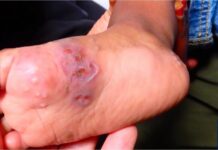By Arret Jatta
Plastic pollution has become one of the most pressing environmental issues of our time, silently infiltrating our oceans and threatening the delicate balance of marine ecosystems.
Every year, millions of tons of plastic waste end up in our seas, impacting countless marine species and disrupting the intricate web of life beneath the waves.
From the majestic sea turtles that mistake plastic bags for jellyfish to the tiny plankton that ingest microplastics, the consequences of our reliance on single-use plastics are far-reaching and devastating.
In 2015, The Gambia took a giant step to ban the sale, importation and the use of plastic bags. However, these laws don’t seem to be enforced now, as plastic bags back in full circulation in the country.
What is Plastic Pollution?
Plastic pollution is the accumulation of plastic in the environment that harms the environment, wildlife, and humans. It’s a global problem that’s caused by the improper disposal of plastic waste
What is the Source of Plastic Pollution in The Gambia?
Improper waste collection: The Gambia’s waste collection system is inadequate, with poor coverage and no structured recycling systems. People often dump waste in the streets and rivers.
Informal dumpsites: Most waste is disposed of in informal dumpsites or burned in backyards. These sites are often overcrowded and can cause health problems and pollute the river and mangrove forest.
Plastic imports: The Gambia is a net importer of plastics, with an estimated 1,760 tons arriving in the country each year.
Fishing practices: Some fishermen throw plastic-wrapped food, gasoline, tea, and coal into the sea after use. They also discard plastic fishing nets when they break.
How does plastic pollution impact marine life?
Plastic pollution impacts marine life in many ways, including:
Ingestion: Marine life can mistake plastic for food, which can lead to starvation, malnutrition, intestinal blockage, and death.
Entanglement: Large pieces of plastic can trap and ensnare marine life, preventing them from escaping.
Toxic contamination: A single plastic particle can absorb up to one million times more toxic chemicals than the water around it.
Invasive species: Floating plastic can transport invasive species which can threaten marine ecosystems and biodiversity.
Internal and external injuries: Plastic can cause internal and external injuries that reduce the ability to swim and fly.
Discarded fishing gear: Discarded fishing gear can trap and ensnare sea life for years after it has been discarded.
How does plastic pollution alters marine ecosystems?
Large items of plastic can capture and entangle marine mammals and fish and stop them from escaping, usually leading to starvation, injury and predator vulnerability. Discarded fishing nets can also smother and break coral reefs, preventing healthy growth.
Plastic pollution around the world has been found to kill our ocean’s coral reefs, which are an essential part of our ocean’s ecosystems and home to thousands of species. Plastics carry bacteria, and they block light and oxygen from getting into the coral.
How does plastic pollution ultimately affects humans beings?
Once plastic reaches the environment in the form of macro- or microplastics, it contaminates and accumulates in food chains through agricultural soils, terrestrial and aquatic food chains, and the water supply. This environmental plastic can easily leach toxic additives or concentrate toxins already in the environment, making them bioavailable again for direct or indirect human exposure. As plastic particles degrade, new surface areas are exposed, allowing continued leaching of additives from the core to the surface of the particle in the environment and the human body. Microplastics entering the human body via direct exposures through ingestion or inhalation can lead to an array of health impacts, including inflammation, genotoxicity, oxidative stress, apoptosis, and necrosis, which are linked to an array of negative health outcomes including cancer, cardiovascular diseases, inflammatory bowel disease, diabetes, rheumatoid arthritis, chronic inflammation, auto-immune conditions, neuro-degenerative diseases, and stroke.
Solutions and Awareness:
- Organized beach clean-ups, river clean-ups, and ocean clean-up projects can remove existing plastic waste from marine environments. Volunteer efforts, coupled with technological advancements, such as autonomous ocean clean-up devices, can make a significant impact.
- Reduce plastic waste: Reduce the amount of plastic waste that leaks into ecosystems. This can help protect wildlife and marine biodiversity, and reduce human exposure to toxins
- Promote sustainable fishing: Implement fishing quotas, reduce bycatch, and use more selective fishing gear.
- Reduce pollutants: Invest in advanced wastewater treatment technologies to reduce the amount of industrial and domestic pollutants that enter the ocean.
- Reduce waste: Reducing waste can help lessen the harmful impact of pollution on the ecosystem
- Implement effective policies and regulations: Create policies and regulations that are effective in addressing the causes of marine litter.
- Sustainable energy and lower emissions: Focus on decarbonizing maritime transport, which is a major source of pollution.














